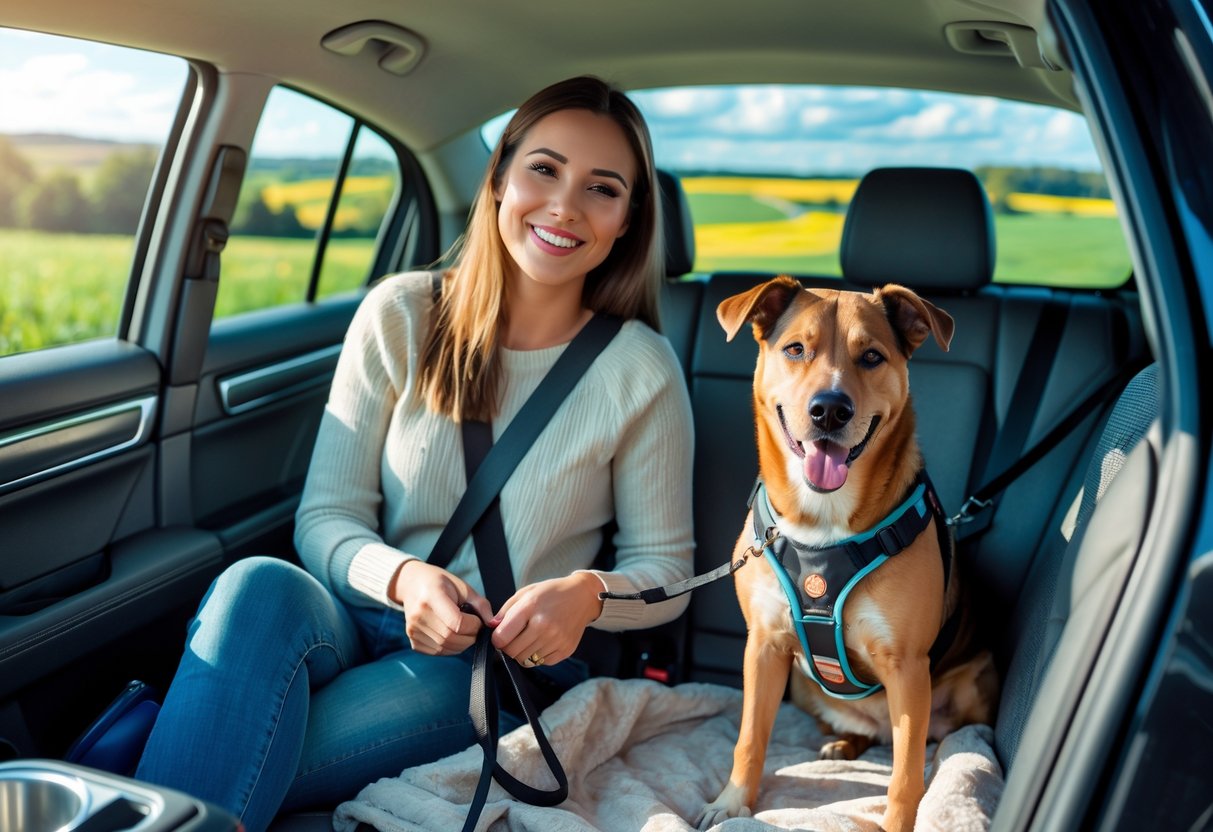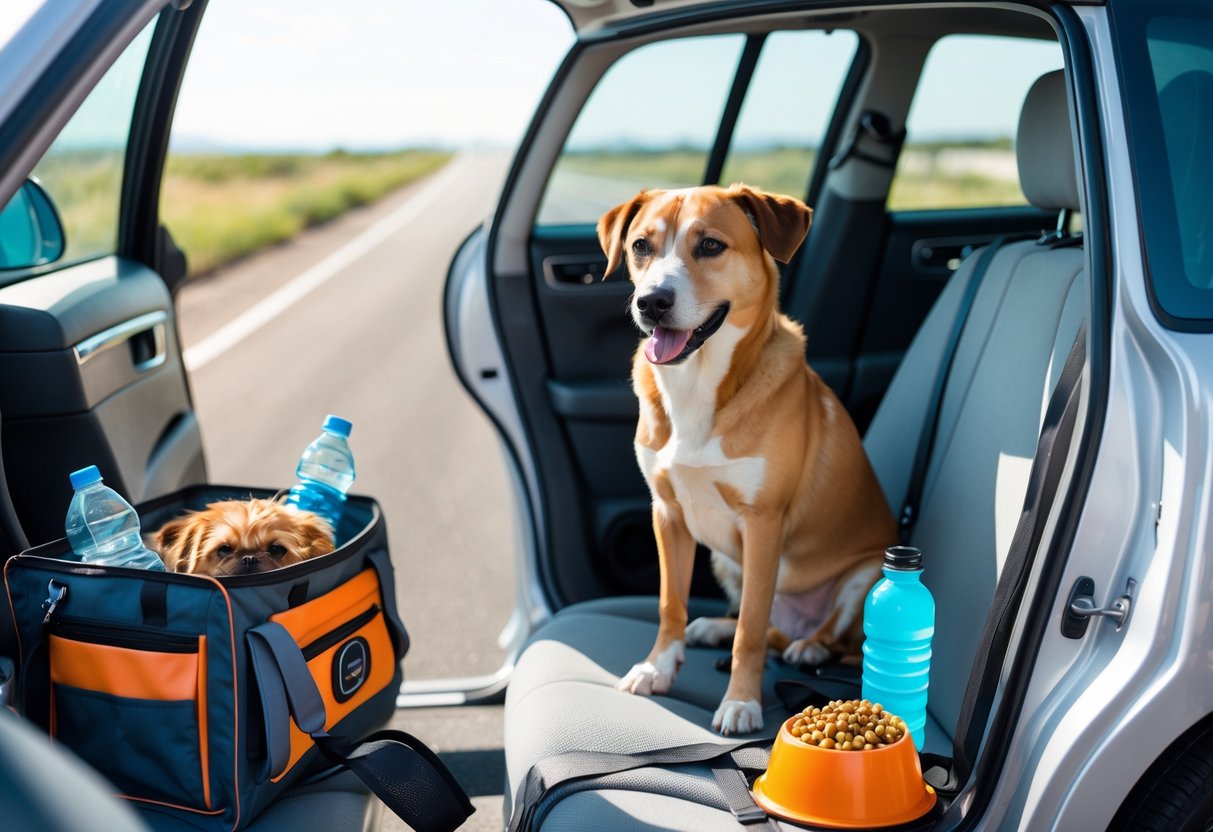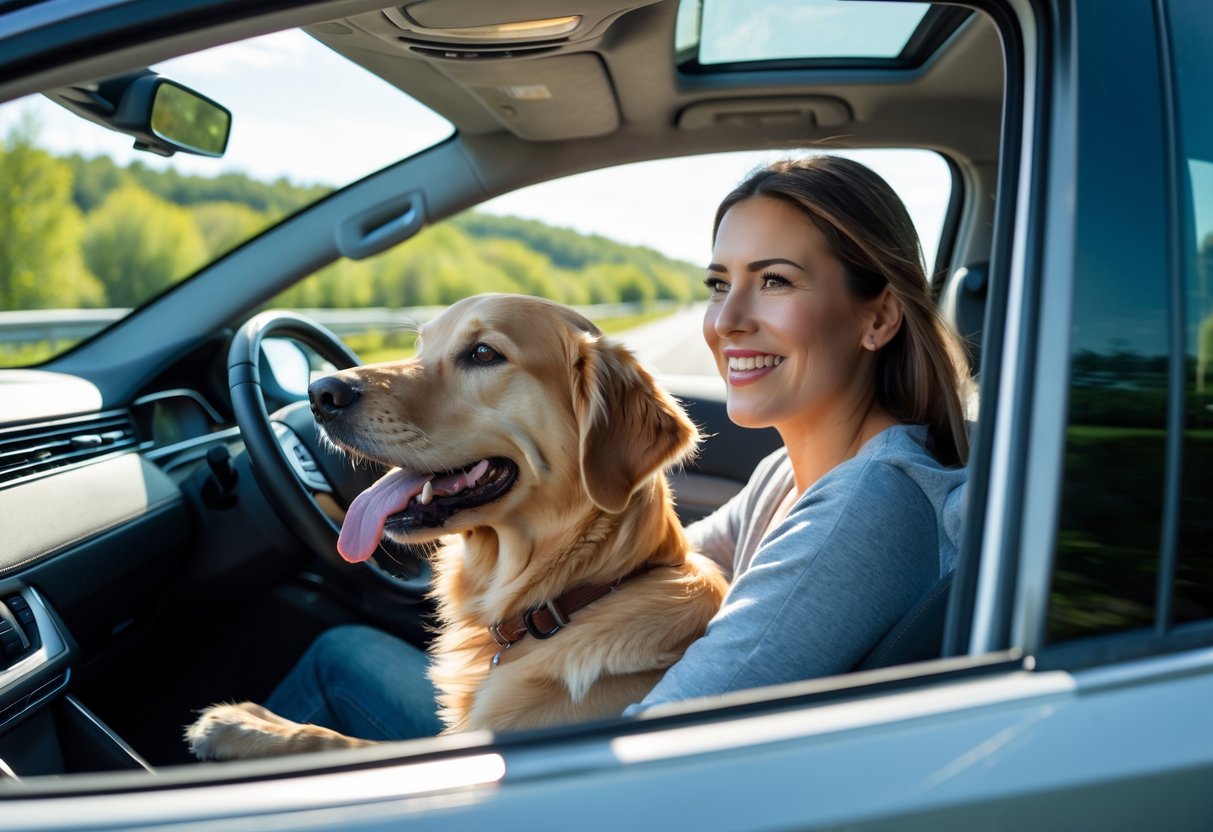How To Travel Long Distance With A Dog Safely and Comfortably

Traveling long distance with a dog requires careful planning to keep the pet safe and comfortable. The key to a successful trip is preparing properly by packing essentials like food, water, and safety gear, and making sure the dog is ready for the journey. Knowing how to prevent problems like motion sickness and where to take breaks also makes a big difference.
Whether traveling by car or plane, owners must follow important steps like checking vaccinations and understanding any travel rules. Making sure the dog is calm and rested before the trip helps avoid stress and makes the experience smoother for everyone involved.
Key Takeways
- Proper preparation and packing are essential for long-distance trips with dogs.
- Keeping the dog comfortable and safe during travel reduces stress and health risks.
- Knowing travel rules and making regular stops improves the dog’s overall experience.
Essential Preparation for Long Distance Dog Travel

Traveling long distance with a dog requires careful planning to keep the pet safe and comfortable. Key steps include ensuring the dog’s health is up to date, packing necessary items for their care, and getting the dog used to travel conditions.
Health Checks and Vaccinations
Before any long trip, the dog should have a full health check-up with a vet. This helps identify any issues that could make travel unsafe. Vaccinations need to be current, especially for diseases common in the travel area.
The vet can also recommend preventive medication for fleas, ticks, or motion sickness. Carry a copy of the dog’s medical records and any needed medications during the trip.
Make sure the dog’s ID tags and microchip information are updated. This is important in case the dog gets lost.
Packing the Right Supplies
Packing the right supplies is essential for keeping the dog comfortable and safe. Important items include food, water, bowls, a leash, waste bags, and any medications.
Bring familiar objects like a favorite blanket or toy to reduce anxiety. A well-ventilated travel crate or dog restraint should be used for safety, especially in cars.
Plan for emergencies by including a basic first aid kit. Also, prepare for bathroom breaks and have a plan to find pet-friendly stops along the way.
Training Your Dog for Travel
Training helps the dog adjust to long trips and reduces stress. Start with short drives to get the dog used to being in a car or crate.
Encourage calm behavior during travel by practicing patience and rewarding quiet moments. Teach the dog to stay comfortable in the crate or restraint.
If the trip includes plane or train travel, help the dog get used to the carrier size and noise. This makes the actual journey less frightening and tiring.
Effective Travel Methods and Comfort Strategies

Traveling long distance with a dog requires careful planning to keep the dog safe and comfortable. Selecting the right transportation, creating a secure space, managing breaks, and dealing with weather are key to a smooth trip.
Choosing the Best Transportation Option
Choosing the right way to travel depends on the dog’s size, health, and temperament. Cars are often best because they allow frequent stops and control over the environment. A well-ventilated crate or dog seatbelt keeps the dog safe while driving.
For air travel, airlines have specific rules. Dogs often travel in a crate in the cargo hold or cabin, depending on their size. It’s important to check the airline’s pet policies before booking. Familiarizing the dog with the crate beforehand helps reduce stress.
Other options like trains or buses may have different rules. Making sure the chosen method offers space, ventilation, and safety is crucial.
Creating a Safe Travel Environment
Safety and comfort inside the vehicle are essential. Using a crate or a secured dog seat keeps the dog from moving around and reduces injury risk in sudden stops.
Important factors:
- The crate should be large enough for the dog to stand, turn, and lie down.
- Use familiar blankets or toys to make the space cozy.
- Make sure the crate is well-ventilated.
- Avoid feeding the dog right before the trip to prevent nausea.
Securing the dog properly also helps the driver focus without distractions.
Managing Rest Breaks and Hydration
Regular breaks are vital for long trips. Dogs need time to stretch, relieve themselves, and drink water.
Plan stops every 2-3 hours. During breaks:
- Offer fresh water.
- Keep the dog on a leash to prevent escapes.
- Let the dog walk around to reduce anxiety and stiffness.
Avoid feeding large meals during breaks to lower the chance of upset stomach. Small snacks and water are better.
Keep bottled water and a bowl handy. Hydration is important, especially on warm days.
Traveling With Dogs in Extreme Weather
Extreme heat or cold can quickly harm dogs during travel. Protecting them is important.
In hot weather:
- Avoid traveling during peak heat hours.
- Use shades on windows.
- Never leave the dog alone in the car.
- Offer water often.
In cold weather:
- Use blankets or dog coats.
- Prevent exposure to ice or snow on paws.
- Keep travel time as short as possible.
Always check weather conditions before and during the trip to adjust plans for the dog’s safety and comfort.

Frequently Asked Questions
Traveling long distances with a dog requires careful preparation, including how to keep the dog safe and comfortable in a car or on a plane. It also involves packing the right supplies and planning routes that accommodate the dog’s needs.
